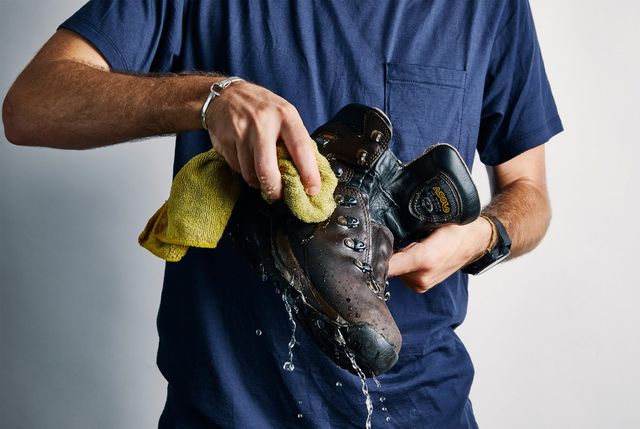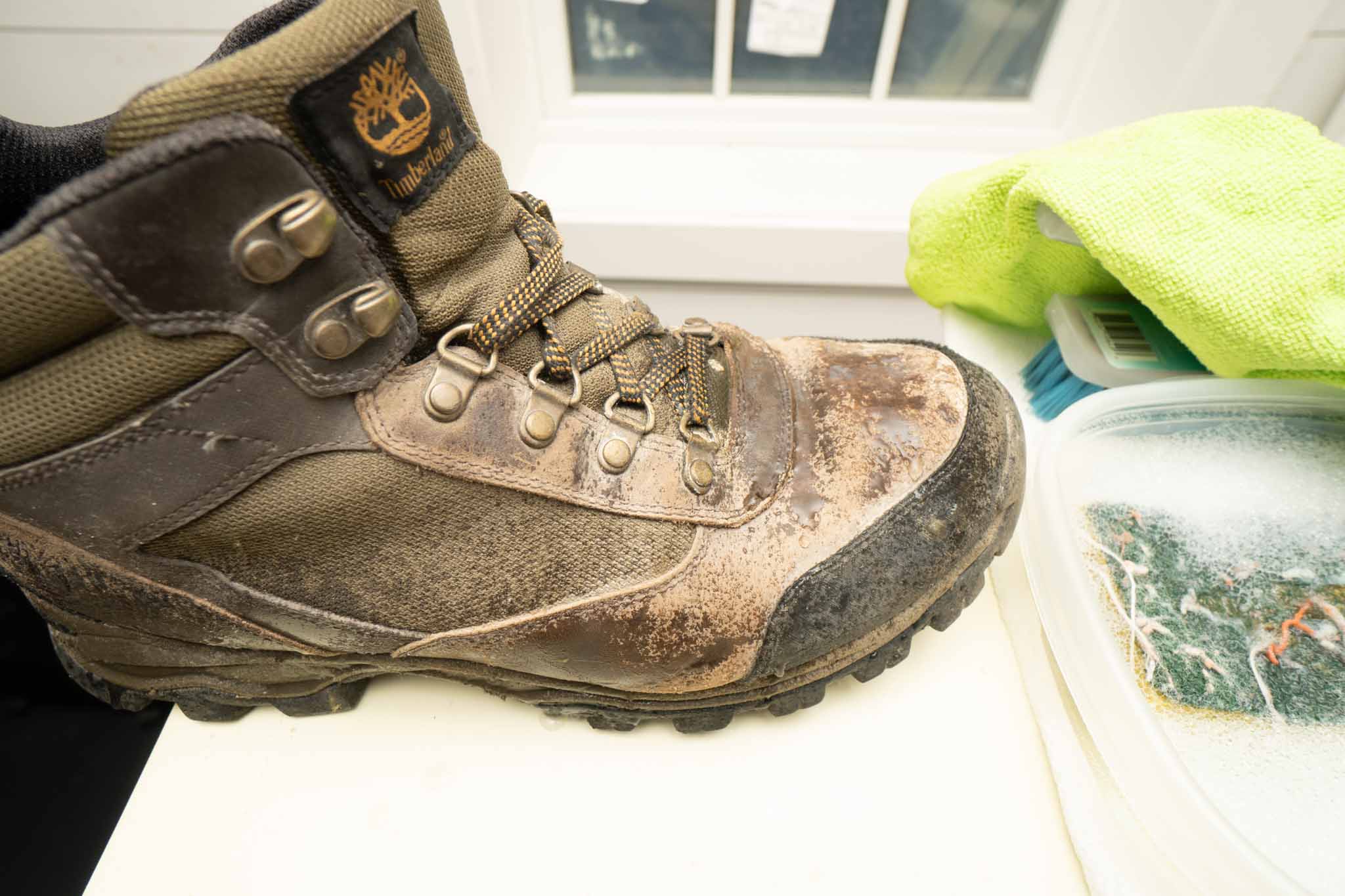The Importance of Regular Cleaning for Work Boot Longevity
Regular cleaning is crucial to extend the lifespan of work boots. Failing to do so can lead to dirt and debris buildup, which can compromise the waterproofing and insulation of the boots. This, in turn, can cause discomfort, fatigue, and even injuries. By incorporating a regular cleaning routine into your maintenance schedule, you can prevent these issues and ensure your work boots remain in top condition. For instance, cleaning your boots after each use can help remove dirt and debris that can cause damage to the materials. Additionally, regular cleaning can help maintain the breathability and moisture-wicking properties of your boots, keeping your feet dry and comfortable throughout the day. Learning how to clean work boots effectively is essential to enjoy a longer boot lifespan, improved performance, and enhanced overall comfort.
Choosing the Right Cleaning Products for Your Work Boots
When it comes to cleaning work boots, using the right products is crucial to maintain their quality and performance. With a wide range of cleaning products available, selecting the right one for your boots can be overwhelming. Soap, conditioners, and waterproofing agents are some of the most common types of cleaning products used for work boots. Soap is ideal for removing dirt and grime, while conditioners help to moisturize and protect the materials. Waterproofing agents, on the other hand, are essential for maintaining the waterproofing properties of your boots. When choosing a cleaning product, consider the material of your boots. For instance, leather boots require different products than synthetic or rubber boots. Always read the label and follow the instructions carefully to ensure you’re using the right product for your boots. By selecting the right cleaning product, you can ensure your work boots receive the care they need to last longer and perform better. Remember, learning how to clean work boots effectively starts with choosing the right cleaning products.
Preparing Your Work Boots for Cleaning: Removing Debris and Loose Dirt
Before diving into a deep cleaning process, it’s essential to prepare your work boots by removing loose dirt and debris. This step is crucial in preventing scratches and damage to the materials during the cleaning process. To start, use a soft-bristled brush to gently sweep away any loose dirt or debris from the surface of the boots. This will help to prevent scratching the materials and make the cleaning process more effective. Next, use a gentle tapping motion to remove any stubborn dirt or debris that’s stuck to the boots. Be careful not to apply too much pressure, as this can cause damage to the materials. By removing loose dirt and debris, you’ll be able to clean your work boots more effectively and learn how to clean work boots like a pro. Remember, a clean slate is essential for a successful deep cleaning process.
Deep Cleaning Your Work Boots: A Step-by-Step Process
Now that your work boots are prepared for cleaning, it’s time to dive into the deep cleaning process. This step is crucial in removing dirt, grime, and other substances that can damage the materials and affect the performance of your boots. To start, apply a small amount of cleaning product to a soft-bristled brush or cloth. Gently scrub the entire surface of the boots, working from the top down. Be sure to scrub all areas, including the tongue, laces, and sole. For tough stains or areas with heavy buildup, you may need to apply a bit more pressure or use a specialized cleaning product. However, be careful not to apply too much pressure, as this can cause damage to the materials. Once you’ve scrubbed the entire surface, use a clean, damp cloth to wipe away any soap or cleaning product. Repeat this process until the boots are clean and free of dirt and grime. By following these steps, you’ll be able to learn how to clean work boots effectively and keep them in top condition. Remember to always read the instructions on the cleaning product and test it on a small, inconspicuous area first to ensure the best results.
Drying and Conditioning Your Work Boots for Optimal Performance
After deep cleaning your work boots, it’s essential to dry and condition them properly to maintain their quality and performance. Improper drying can lead to cracking, fading, or discoloration of the materials, while neglecting to condition can cause them to become brittle and prone to damage. To dry your work boots, use a clean, dry cloth to wipe away any excess moisture. Avoid using heat to speed up the drying process, as this can cause damage to the materials. Instead, allow the boots to air dry naturally. Once dry, apply a conditioner or waterproofing agent to the boots, following the manufacturer’s instructions. This will help to maintain the waterproofing and insulation of the boots, ensuring they continue to perform optimally. By drying and conditioning your work boots properly, you’ll be able to learn how to clean work boots effectively and extend their lifespan. Remember to always read the instructions on the conditioner or waterproofing agent and test it on a small, inconspicuous area first to ensure the best results.
Tips and Tricks for Removing Tough Stains and Odors
Despite regular cleaning and maintenance, tough stains and odors can still occur on work boots. Removing these stubborn imperfections requires specialized cleaning products and techniques. For oil-based stains, try using a solvent-based cleaner or a product specifically designed for removing oil and grease. For tough odors, baking soda and water can be used to create a paste that absorbs and neutralizes the odor. Apply the paste to the affected area, let it sit for a few hours, and then rinse with warm water. For more severe stains and odors, consider using a product containing enzymes, which break down the proteins that cause the stain or odor. When learning how to clean work boots, it’s essential to know how to tackle these tough imperfections. Remember to always read the instructions on the cleaning product and test it on a small, inconspicuous area first to ensure the best results. Additionally, consider using home remedies like vinegar and water or lemon juice and salt to remove stains and odors. These natural remedies can be effective and gentle on the boot materials.
Protecting Your Work Boots from the Elements: Waterproofing and Insulation
Waterproofing and insulation are crucial components of work boots, as they protect the feet from harsh weather conditions and keep them dry and warm. To maintain the waterproofing and insulation of work boots, it’s essential to apply waterproofing agents regularly. These agents create a barrier that prevents water and moisture from penetrating the boot materials. When learning how to clean work boots, it’s vital to understand the importance of waterproofing and insulation. For boots with insulation, make sure to check the insulation regularly for signs of wear and tear. If the insulation is damaged, replace it to ensure the boots continue to perform optimally. Additionally, consider applying a waterproofing agent to the insulation to further protect it from moisture. By protecting the waterproofing and insulation of work boots, individuals can ensure their feet remain dry and comfortable, even in the most challenging environments. Remember, regular maintenance and cleaning are key to extending the lifespan of work boots and keeping them in top condition.
Maintenance and Storage: How to Keep Your Work Boots in Top Condition
Proper storage and maintenance are crucial to extending the lifespan of work boots. When not in use, store work boots in a cool, dry place away from direct sunlight. This helps prevent the materials from deteriorating and reduces the risk of mold and mildew growth. Use boot trees or stuff the boots with paper to maintain their shape and prevent creasing. Regularly cleaning and conditioning work boots, as outlined in this guide on how to clean work boots, is also essential for maintaining their quality and performance. Additionally, consider applying a waterproofing agent to the boots before storing them to protect the materials from moisture. By following these simple storage and maintenance tips, individuals can ensure their work boots remain in top condition, even when not in use. Remember, a well-maintained pair of work boots can provide years of reliable service, making them a valuable investment for anyone who relies on them for their livelihood.







